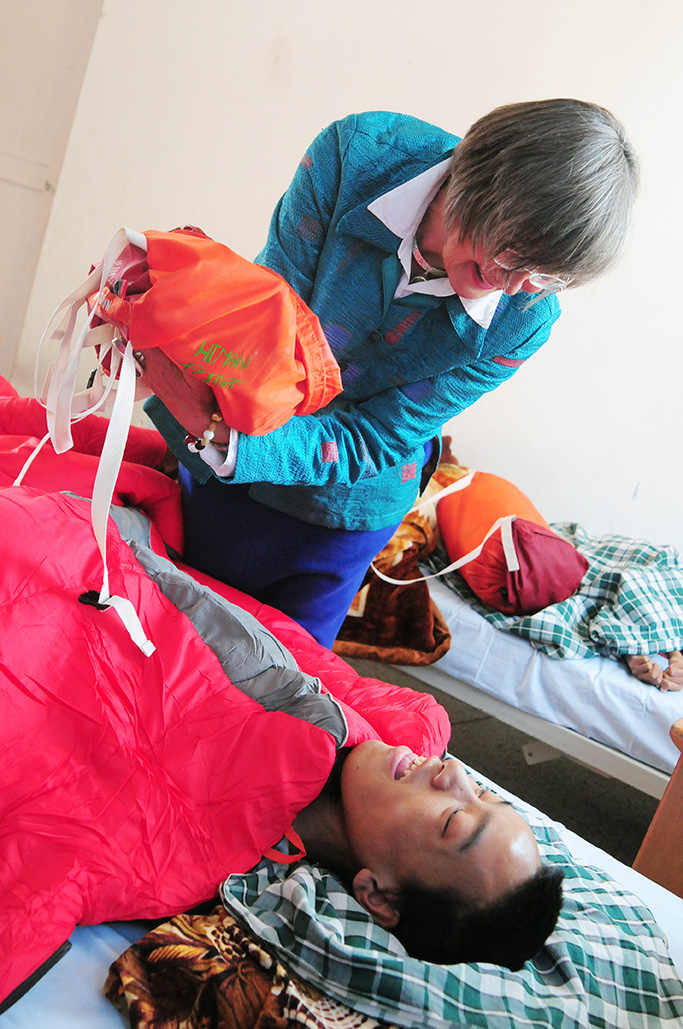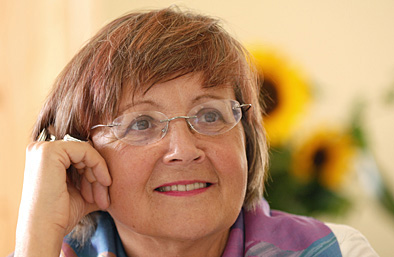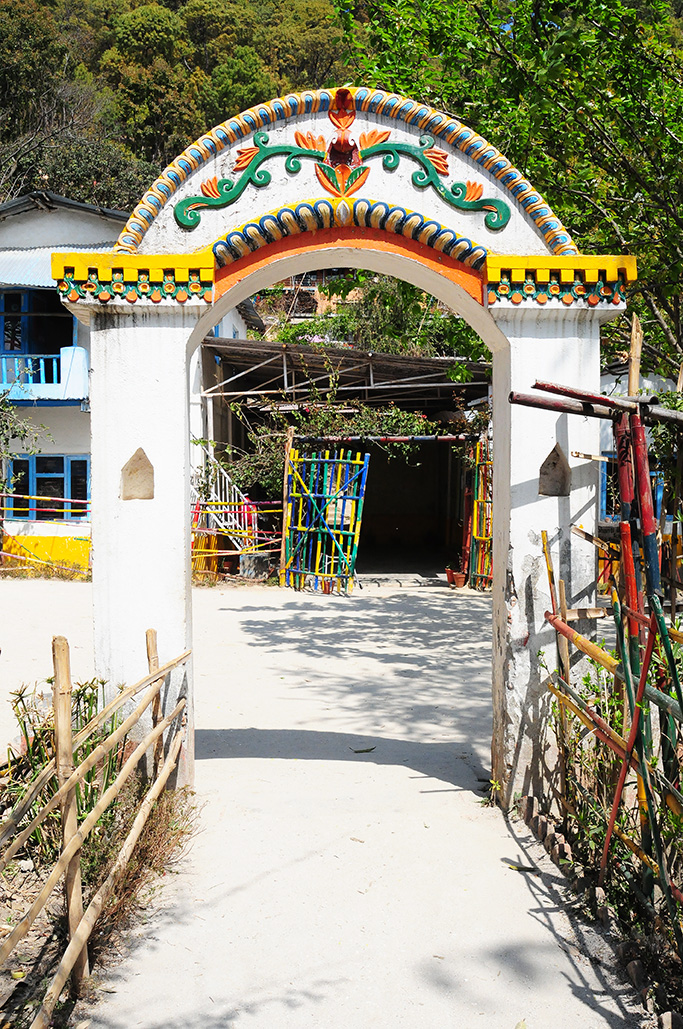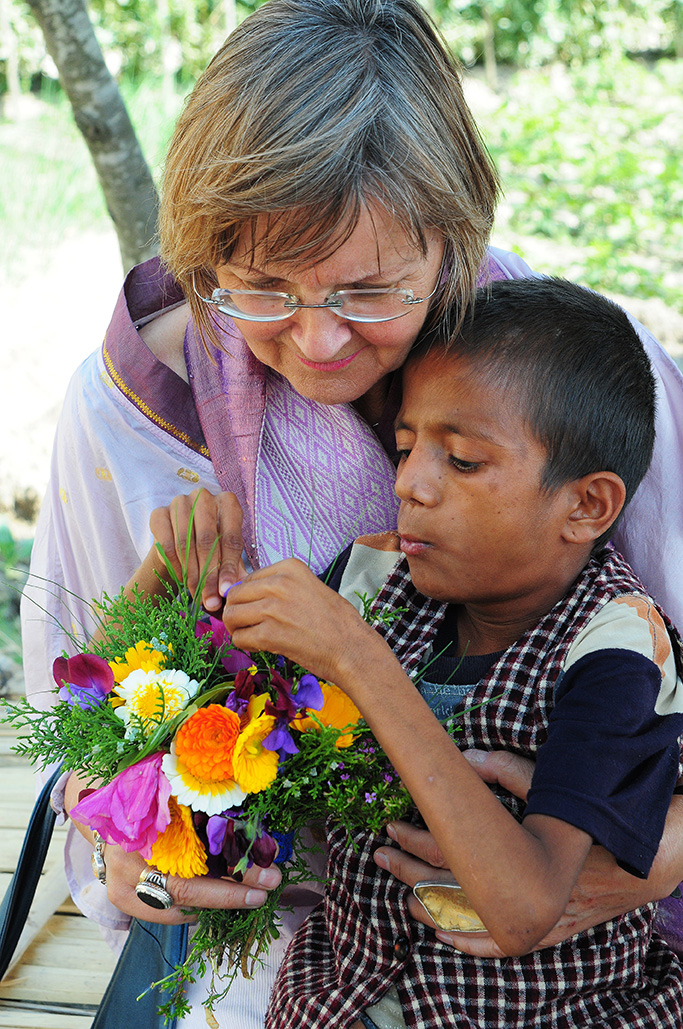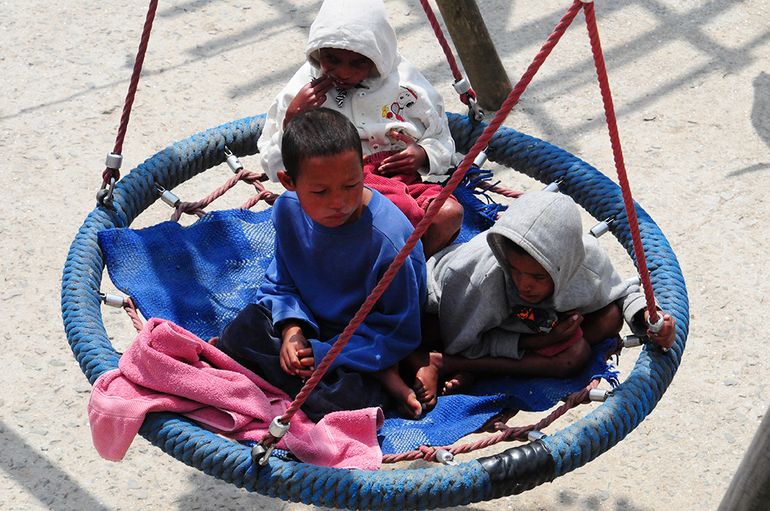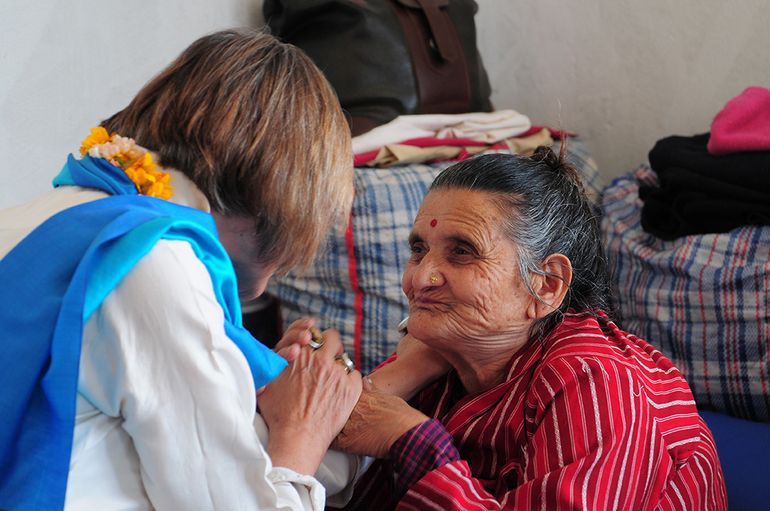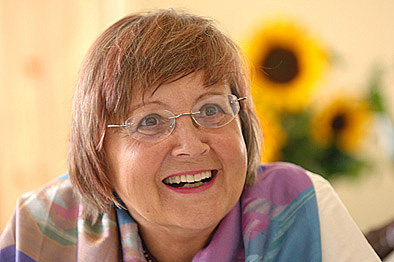HOW IT ALL BEGAN...
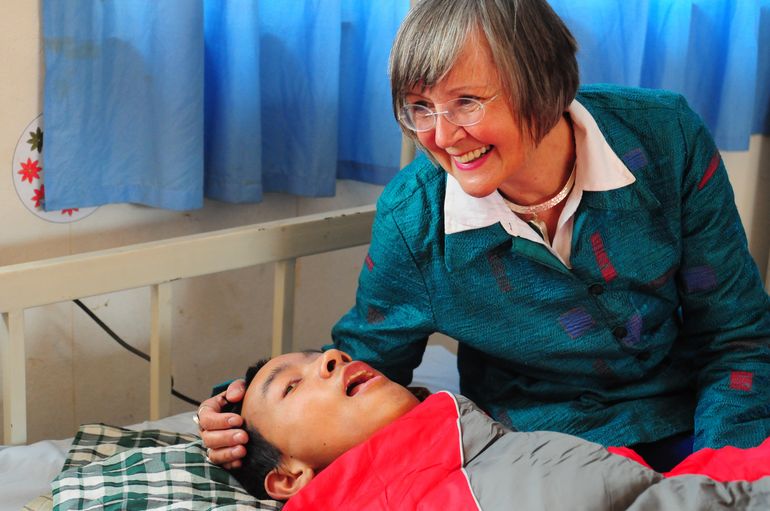
THE BIRTH OF SHANTI LEPRAHILFE
Marianne Grosspietsch raised two children, who were born towards the end of the 1960s. She explains, “We wanted to raise them to be tolerant and open-minded. In that time it was common for people to look after not only their own young, but also those who didn't have it as well as we did in Europe."
Sponsoring a child in Nepal, where poverty and suffering were rampant, was very common. However, it was less common to fly to Asia yourself and see how the child was doing and where the donations should be going. Together with her husband, Herbert, Marianne Großpietsch first travelled to Kathmandu in 1973.
What she saw there permanently changed her life. She reports, “We visited our sponsor child, a young boy named Puskal, at his parents. Both of them suffered from leprosy and lived with the child in a ghetto for leprosy sufferers. They were treated like outcasts because no one wanted to come near them for fear of infection. Leprosy is a contagious nerve disease caused by bacteria. However, it can be treated with antibiotics and there is no reason whatsoever to stigmatise and segregate leprosy sufferers.”
In order to give Puskal a better life and especially to provide him with a good education, Marianne Grosspietsch and her husband sponsored the cost to send the boy to a good boarding school in Kathmandu, with the consent of his parents. They remained in touch with him through correspondence.
However, after one year they had to take Puskal out of the school because influential parents had protested to their children learning together with a child of lepers. That's when the Großpietsch family decided to adopt Puskal and take him to Germany. Puskal's parents agreed – and it was naturally understood that everyone would remain in contact.
After completing his college entrance qualification, Puskal travelled with Marianne again to Kathmandu in 1989 in order to visit his parents in the ghetto for lepers. However, his father had been blinded by leprosy and was unable to recognise his own son, who had grown up in the meantime. In addition, he had lost his hands and feet due to the illness, and he died shortly after Puskal's arrival.
This experience was to become the birth of Shanti. Marianne Grosspietsch reports, “This experience touched my soul. I had greatly enjoyed studying a few semesters of theology and Judaism, but one thing became clear to me - if I wanted to be true to myself, then there was no way around what Jesus had said: “what you have done for the lowliest of my brothers and sisters, you have done for me."
In 1992 she founded the first Shanti Leprahilfe help station for lepers. Friends from Germany donated 17,000 D-Marks, which allowed her to hire a doctor and open an outpatient clinic that treated 60-100 people daily.
At the same time, she rented a house and took in 12 beggars who had been ousted from their village community after contracting leprosy and now roamed the city without shelter. At Shanti they received food, a roof over their heads and meaningful roles that gave their lives a purpose.
Over the years, Shanti has experienced many high and low points, has moved multiple times, and has survived the civil war, coup d'etat against the king and various government administrations.
Satellite branches were founded in Budhanilkhanta and Sundarijal.
Thanks to the generous donations of Hape Kerkeling and support from the German Federal Ministry for Economic Cooperation, a clinic and housing were built in Tilganga in Kathmandu to provide for those under Shanti's care.
Financing was made possible thanks to negotiations of the German Rotary Club in Düsseldorf, which became aware of Shanti through other projects in Nepal and actively supported further expansion.
Today, Shanti is the largest private German aid organisation in Nepal and is an indispensable component in the social life of the country.
Read a transcript of the conversation between Marianne Grosspietsch and Doris Kleinau-Metzler in 2007.
You'll also find a good overview of the stories in the newsletters, which Marianne Grosspietsch personally writes three times each year to all of the donors.
